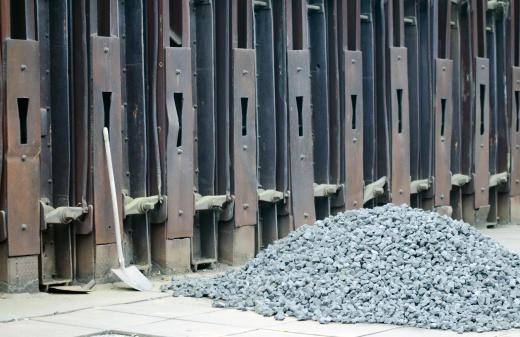A smokeless fuel is a substance that can be burned without releasing any visible airborne particulates. The term typically refers only to solid fuels, since liquid and gaseous fuels are less likely to contain compounds capable of forming smoke. Some common solid fuels that are typically regarded as smokeless are anthracite coal, coke, charcoal, and hexamine fuel tablets. Though smokeless fuel does not release particulates into the atmosphere when burned, other pollutants may be created as a byproduct of combustion. Anthracite coal is often referred to as clean since it does not release smoke when burned, but power plants fired by the material still release greenhouse gases.
The reason that a smokeless fuel does not release airborne particulates when burned is due to its physical composition. Anthracite coal, for example, differs from other coals in that it has fewer impurities and a higher carbon count. Unlike other forms of coal, anthracite can actually have a carbon content of up to 98%. It can also be differentiated from other coals by the fact that it does not emit a tarry vapor when heated below the point of ignition. This smokeless fuel was once an important source of heat for residential homes and is still used for electricity production.

Unlike anthracite coal, which has its volatile components removed naturally, charcoal is typically created through pyrolysis. This is a process of heating animal or vegetable matter in a low oxygen environment. Through pyrolysis, much of the moisture and volatile components of a compound can be removed. The resulting briquettes are brittle, soft, and bear somewhat of a resemblance to lower grade coal. Since most of the volatiles have been removed, charcoal briquettes tend to be a smokeless fuel that can be used for cooking or heating.
Another type of smokeless fuel is coke, which has replaced coal and charcoal in many industrial uses. This material is also created through pyrolysis, though bituminous coal is used instead of wood. Like charcoal, the compounds that result in smoke are removed from bituminous coal during the pyrolysis process. The resulting product is very high in carbon and can be burned without releasing smoke.
Despite the fact that they do not contribute to pollution through the release of airborne particulates, smokeless fuels can still release harmful compounds. Many smokeless fuels release greenhouse gases when combusted, and other forms of pollution may be created as well. Carbon monoxide is one gas that is commonly released when charcoal is burned, which can be dangerous if it is used for cooking or heating in an unventilated, indoor space.
